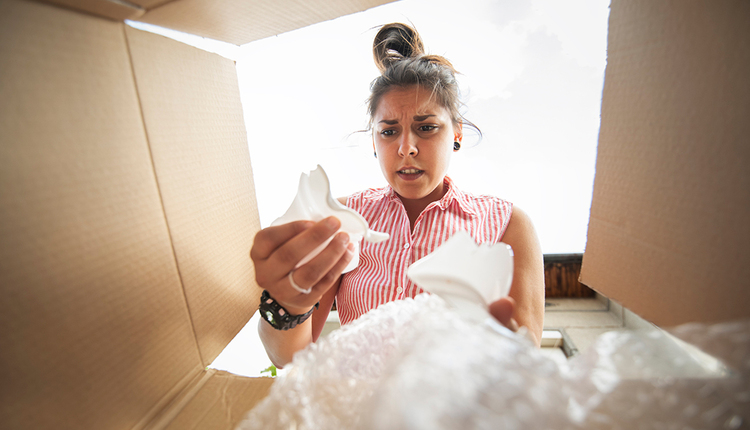Almost every company has done it: sent a package that was larger than it needed to be and ended up paying the price in the form of dimensional weight surcharges. (As a refresher, dimensional weight is your package’s height x width x length, divided by the current DIM factor. Your package will be billed at the rate of whichever is higher, the actual weight or the dimensional weight). While some of these dimensional weight surcharges are unavoidable, many shippers are able to mitigate much of this cost through careful planning, especially when it comes to the packaging design process.
Many schools of packaging teach something called the “6 Step Method for Protective Packaging Design” and entails the following:
- Define the Environment
- Assess the Product Fragility
- Provide Product Improvement Feedback
- Evaluate Cushion Material Performance
- Design the Package System
- Test the Product/Package System
I personally attempted to use this approach early in my career, but didn’t care for the fact that packaging design and testing are at the end of the methodology. Furthermore, while profit is the number one goal of all businesses, there is no indication of how this method would lead to maximum profit. If maximizing profit is indeed the goal of the organization utilizing it, then the order of this method should be changed. This new order informs management of the costs associated with product design choices that influence the final size of the package. Here’s how to flip (and somewhat reduce) the order to achieve maximum profits:
1.Packaging engineering provides cost analysis for shipping a proposed new product, based on size and geometry of product. For instance, I showed management that decreasing a product’s width by just three mm increased pallet density by 25%, thus saving $2 million in shipping costs for that portion of the supply chain where products are unitized. This proposed product hadn’t yet been tooled, so management had engineers shrink the product as a result of this analysis. More sophisticated companies welcome packaging engineering input on product design, but many companies miss this opportunity. If the R&D product manager was responsible for the landed cost of new products, and not just the component and manufacturing costs, then packaging engineering can contribute in ways beyond packaging design.2.Design the packaging to be the absolute smallest possible to hold the product and its accessories, yet fit squarely (i.e., no overhang and minimal under-hang) on standard pallets for the portion of the supply chain where it’s palletized. Taking this approach leaves a certain amount of space between the product and the inside of the box. This approach, starting with the most cost effective size and materials possible, would be termed “design from the outside-in,” where the design is guided and propelled by supply chain costs and the fixed sizes of pallets, planes, trains, and trucks used in that specific supply chain. Let’s say there is ¾” (19 mm) space left between the product the box. The concept would be to force the product robustness to accept only this much cushioning to survive drop tests. If the product breaks, then a choice is made: Do you improve product robustness or increase the size of the box?
Let’s say this box fits in layers of eight on a pallet. If the product manager says they don’t want to improve the product to survive in the smallest box possible, then there’s a logical next size up to fit pallets squarely, causing not only a specific decrease in pallet density/storage/material handling, but also an easily calculable cost for single parcel shipment. If volumes are significant, then it would rarely make financial sense to increase the box size vs. improve product design. Very few companies have taken the time to compare the cost tradeoffs between product and packaging as they relate to supply chain costs, but this method has proven itself to be very effective.3.The original method shows product fragility testing to be the driver for how much packaging should then be added. I term this “inside-out” designing, meaning the product fragility is the driver to the final package size. Fragility testing of bare products is a great way to define product robustness, but there are several problems in defining the amount of packaging protection actually required. If anything, damage boundary testing is better at comparing products and component design to one another. The testing I propose at this stage uses a dummy product, made of wood or resin and weighted exactly as the new product will be, and not use an expensive prototype product, which in reality may not represent the actual fragility of the final product. Using the dummy product in a proposed cushion design allows one to fine tune the cushion, to ensure that each face, edge, and corner will provide the minimum input possible to the product during a specific impact/drop. We don’t need a product to break at this point, but we do need to accurately record the shock through the cushion. Once this is established, then product designers will know exactly what the new product must survive and, from the previous step, the cost consequences if they don’t make it survive. Conducting drops with accelerometers in the dummy and using a shock table with high speed video to record the actual deflection of the cushion (through viewing holes in the box), ensures the cushioning is truly working at its maximum. Cushioning iterations can all take place prior to testing a real product, and if all goes well, this should be close to the final design, months before the real product is to be released for manufacturing.
4.Now that protective packaging has been designed and tested in step 3, the packaging department can show product designers that protection has been completely optimized for the smallest box possible, so the only question now is whether the product design can pass the tests in the proposed package. Certainly, if the product would require extensive and particularly expensive redesign, then perhaps it would be best to add more packaging, but the reality is that in complex spring-mass system products with many components, usually only one or a few show fragility problems. Oftentimes, the component itself doesn’t break, but the mounting system of that component is the problem. Sometimes, case parts crack along edges due to drops, but simply filleting them (adding more radii to the inside edges) eliminates this issue. Assuming the drop testing is more thorough than the standardized international tests, it will be seen that only some orientations are problematic, and that only a very few aspects of the product design need to be reassessed. Testing until failure, where input levels are increased by steps, allows one to know the weakest links of the product and packaging design and/or how much margin there is between expected inputs and the robustness of the design.
So, inside-out or outside-in? To limit shipping costs, one way is better than the other.
Kevin Howard is a consultant with and owner of Packnomics LLC. His focus is on distribution packaging design and testing. He can be reached at kevin.howard@packnomics.com. Visit www.packnomics.com for more information.
This article originally appeared in theMarch/April, 2020issue of PARCEL.












